HENRY MCBRIDE SERIES IN MODERNISM AND MODERNITY
The artistic movement known as modernism, which includes the historical avant-garde, produced the most radical and comprehensive change in Western culture since Romanticism. Its effects reverberated through all the arts, permanently altering their formal repertories and their relations with society at large, and its products still surround us in our workplaces and homes. Although modernism produced a pervasive cultural upheaval, it can never be assessed as an artistic movement alone: its contours took shape against the background of social, political, and intellectual change, and it was always bound up with large questions of modernity and modernization and with the intellectual challenge of sifting their meanings. Henry McBride (18671962) became perhaps the leading American critic of his time to write perceptively and engagingly on modern art. The Henry McBride Series in Modernism and Modernity, which focuses on modernism and the arts in their many contexts, is respectfully dedicated to his memory.
Editorial Committee
Lawrence Rainey, University of York, General Editor
Ronald Bush, Oxford University
Arthur Danto, Columbia University
Charles Harrison, Open University
Jean-Michel Rabat, University of Pennsylvania
Jeffrey Schnapp, Stanford University
Richard Taruskin, University of California, Berkeley
Robert Wohl, University of California, Los Angeles
Marcel Proust A LIFE
With a New Preface by the Author
William C. Carter
Yale University Press  New Haven and London
New Haven and London
This book has been published with assistance from the fund for the Henry McBride Series in Modernism and Modernity established by Maximilian Miltzlaff.
Copyright 2000 by Yale University. Preface to the 2013 edition copyright 2013 by Yale University. All rights reserved. This book may not be reproduced, in whole or in part, including illustrations, in any form (beyond that copying permitted by Sections 107 and 108 of the U.S. Copyright Law and except by reviewers for the public press), without written permission from the publishers.
Yale University Press books may be purchased in quantity for educational, business, or promotional use. For information, please e-mail sales.press@yale.edu (U.S. office) or sales@yaleup.co.uk (U.K. office).
Designed by Rebecca Gibb. Set in Minion type by Keystone Typesetting, Inc., Orwigsburg, Pennsylvania. Printed in the United States of America.
Library of Congress Control Number: 2012951856
ISBN 978-0-300-19179-0 (pbk.)
A catalogue record for this book is available from the British Library.
10 9 8 7 6 5 4 3 2 1
For Lynn, my love
Contents
Illustrations follow pages
Preface to the 2013 Edition
Any details of the lives of men whose opinions have had a marked influence upon mankind, or from whose works we have derived pleasure or profit, cannot but be interesting.Edward John Trelawny
IN 2013, THIS CENTENNIAL YEAR of Swanns Way, I am glad to have the opportunity to publish a new edition of this biography, which first appeared in 2000. A number of corrections have been made in this edition. I have not incorporated fresh material because I had the opportunity to provide and discuss what I consider to be important new information about Prousts life in two subsequent books, both published by Yale University Press in 2006: Proust in Love and The Memoirs of Ernest A. Forssgren.
In Proust in Love, we learn that Proust suffered the humiliation and indignity of being swept up in a police raid while visiting a male brothel that he helped finance and furnish. Prousts sexual proclivities and his rather bizarre, sadistic manner of arousing himself have long been known. He had even confessed them to Andr Gide, knowing no doubt that Gide would record them, as indeed he did, in his voluminous diary that covers the years 18891949. But we did not know, prior to research done by the French scholar Laure Murat, that one of Prousts worst fears had been realized: that of being arrested in such a raid and exposed publicly as a homosexual. Apparently, the affair was kept quiet. How this was managed we do not know. Like most homosexuals of his day, Proust feared not only public exposure but also the threat of blackmail. As a young man he had fought a duel to protect his honor after a journalist insinuated that he was homosexual.
In writing Proust in Love, I gleaned new information from Paul Morands posthumously published private diary, Le Journal inutile, which remains available only in the French edition. A novelist and diplomat, Morand was well acquainted with Proust and his circle and recorded many previously unknown details about him, such as his modus operandi when attempting to seduce young men from the servant class. This extensive diary, published in two volumes, along with other sources, increased our knowledge of the information Proust used to depict a variety of sexual types, particularly homosexuals and bisexuals. With such additional material, I was able to focus on the links between Prousts amorous relationships and their transposition into the Narrators often frustrated erotic longings. Proust makes the comprehension and resolution of such longings a pivotal moment in his protagonists long quest to comprehend the meaning of his lifes experience and the discovery of his vocation as a writer.
The memoirs of Ernest Forssgren and related documents, including previously unknown Proust autograph items, came into my possession through a generous gift from Marilyn Gordon, whose family became a friend of Forssgrens many years after he immigrated to the United States. The memoirs bring to light many details about Prousts trip in September 1914, just after the outbreak of World War I, to the Grand-Htel in Cabourg. Proust was accompanied by his housekeeper, Cleste Albaret, and his newly hired valet, Ernest Forssgren. Because of the war, this was to be the authors last visit to this beloved seaside resort, which is the model for Balbec in In Search of Lost Time. Before the publication of Forssgrens recollections, Clestes first-person account in her memoirs, Monsieur Proust, was the only record available of that difficult and dangerous trip. On comparing her memories with Forssgrens, we find that, for certain important details, his memory served him better. For example, she insists that there were no wounded soldiers billeted at the Grand-Htel during Prousts stay, whereas Forssgren states otherwise and provides a number of details. Prousts own letters, published years after both servants wrote their memoirs, demonstrate that Forssgren remembered correctly.
The Forssgren material includes a telegram that Proust sent to him only a few months before the author died. This information allowed us to correct earlier inadvertent misrepresentations in scholarly journals and biographies, including my own, about the sequence of events involving Forssgren that preceded Prousts death on November 18, 1922. In 1975, excerpts from Forssgrens memoirs were published in French in the Cahiers Marcel Proust, n.s. 7, tudes proustiennes, II, 11942. Neither the source nor the translators name was given. Now that we have the original memoirs, it is evident that the French editors were given only an inaccurate translation and did not see the original document. The published portion led biographers to believe that early in the fall of 1922, Proust waited for hours outside Forssgrens hotel room in Paris, hoping in vain to see the young man who had returned to France for a brief visit. Not only that: Forssgren maintained that Proust caught the cold that led to his death while waiting in the drafty hallway. We now know that the unknown translator changed lobby, which is where one would expect Proust to wait, to hallway. But there is more. The complete original memoirs and the previously unknown telegram dated September 1 show that the sequence of events laid out by Forssgren is impossible. Forssgren does not refer to the evidence of the telegram in his possession when creating his version in the memoirs of the sequence of events leading up to Prousts death. My research shows that Forssgren left Paris too early for the missed rendezvous at the hotel to have been a factor. The sailing and immigration manifests show that Forssgren arrived in New York harbor aboard the
Next page

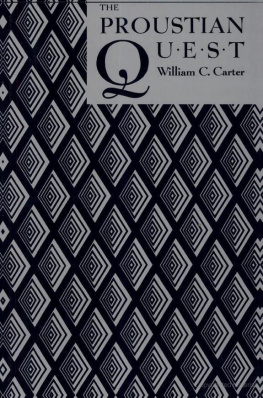

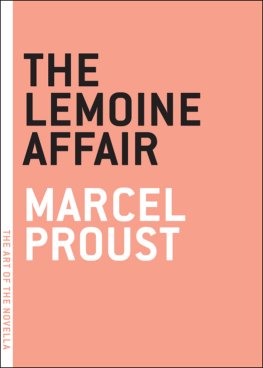

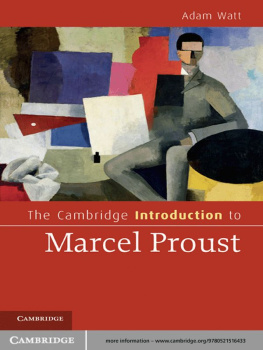
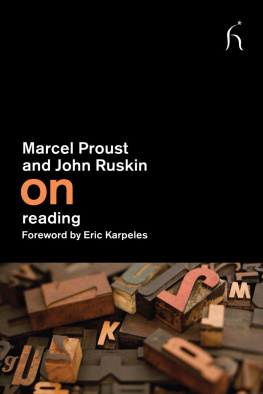

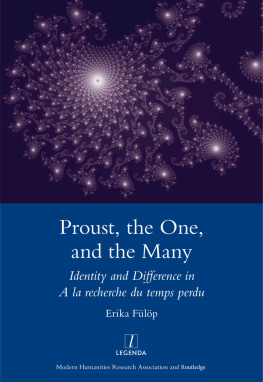
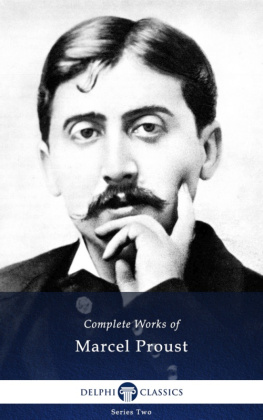
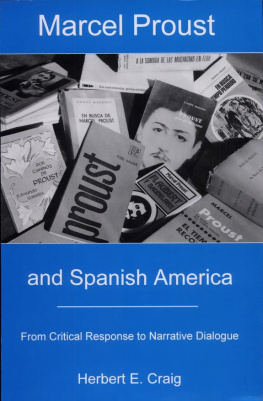
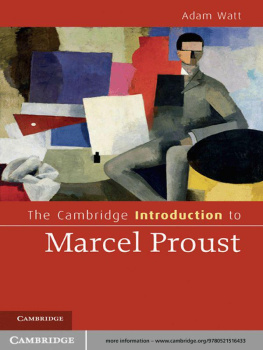
 New Haven and London
New Haven and London